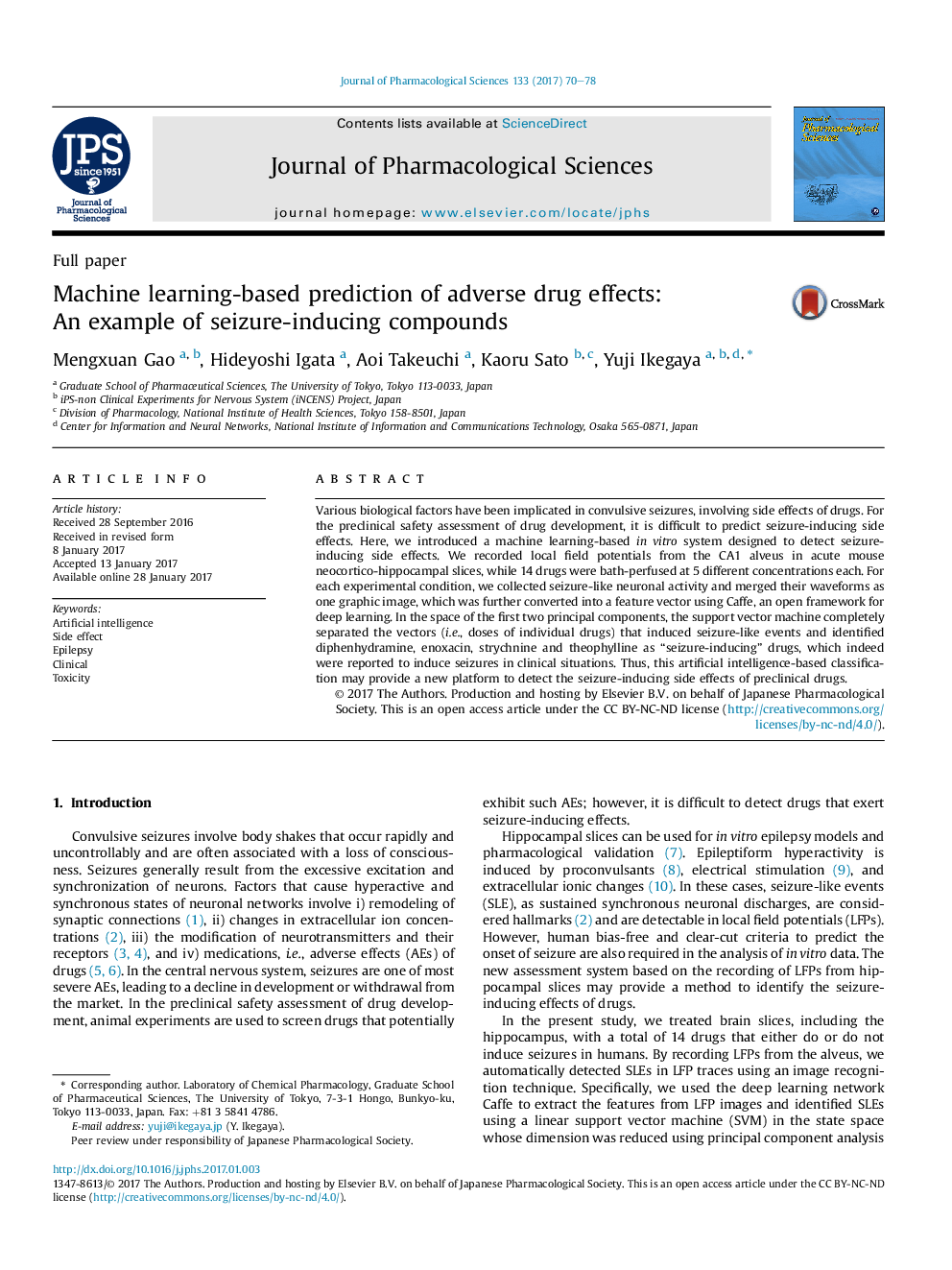| Article ID | Journal | Published Year | Pages | File Type |
|---|---|---|---|---|
| 8533444 | Journal of Pharmacological Sciences | 2017 | 9 Pages |
Abstract
Various biological factors have been implicated in convulsive seizures, involving side effects of drugs. For the preclinical safety assessment of drug development, it is difficult to predict seizure-inducing side effects. Here, we introduced a machine learning-based in vitro system designed to detect seizure-inducing side effects. We recorded local field potentials from the CA1 alveus in acute mouse neocortico-hippocampal slices, while 14 drugs were bath-perfused at 5 different concentrations each. For each experimental condition, we collected seizure-like neuronal activity and merged their waveforms as one graphic image, which was further converted into a feature vector using Caffe, an open framework for deep learning. In the space of the first two principal components, the support vector machine completely separated the vectors (i.e., doses of individual drugs) that induced seizure-like events and identified diphenhydramine, enoxacin, strychnine and theophylline as “seizure-inducing” drugs, which indeed were reported to induce seizures in clinical situations. Thus, this artificial intelligence-based classification may provide a new platform to detect the seizure-inducing side effects of preclinical drugs.
Related Topics
Health Sciences
Pharmacology, Toxicology and Pharmaceutical Science
Pharmacology
Authors
Mengxuan Gao, Hideyoshi Igata, Aoi Takeuchi, Kaoru Sato, Yuji Ikegaya,
